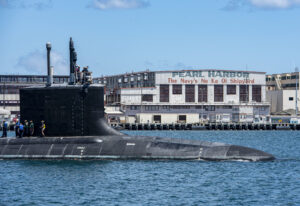
The U.S. government’s plan to sell Australia three to five attack submarines (SSNs) in the 2030s as part of the AUKUS pact could lower U.S. SSN stocks by that many boats for upwards of 20 years compared to the current 30-year shipbuilding plan, according to a recent Congressional Budget Office report. An annual CBO report on the Navy’s fiscal year 2024 30-year shipbuilding plan, released October 26, said that a “major uncertainty in the Navy’s plans for attack submarines is…

 By
By 











